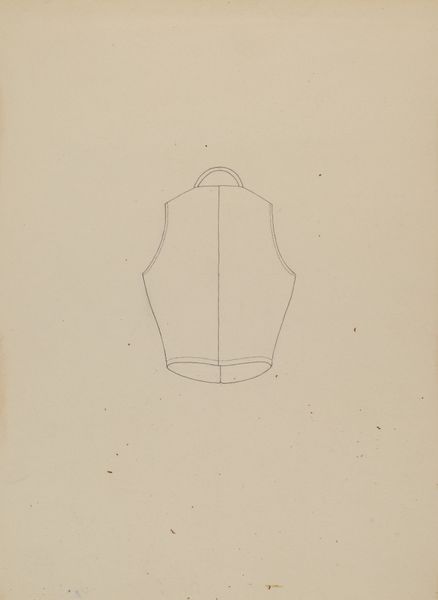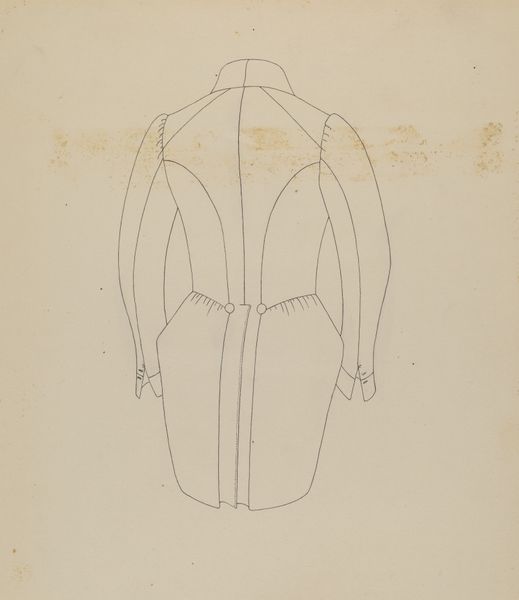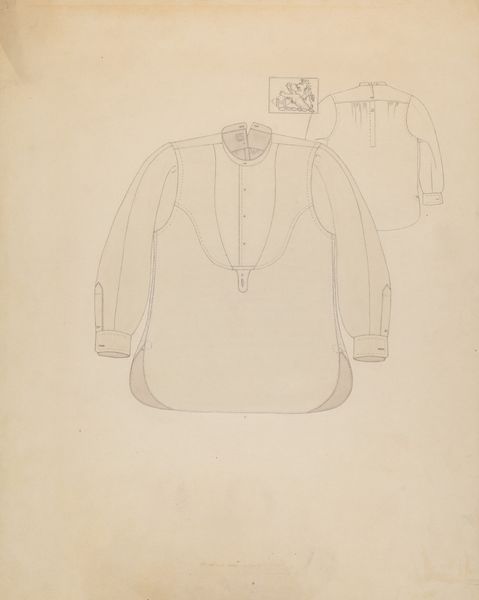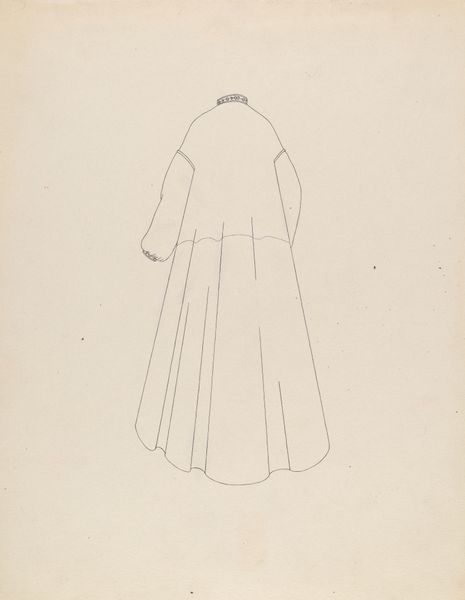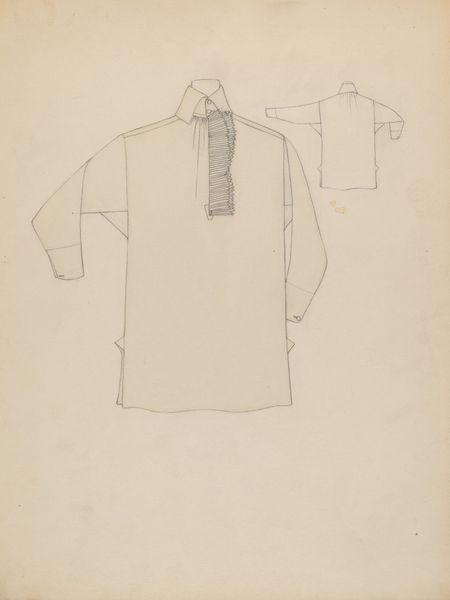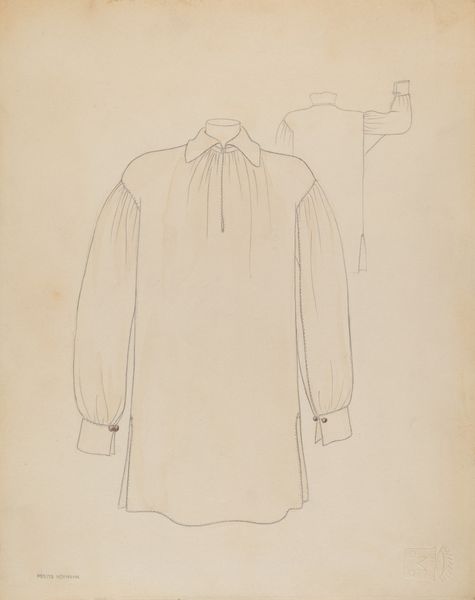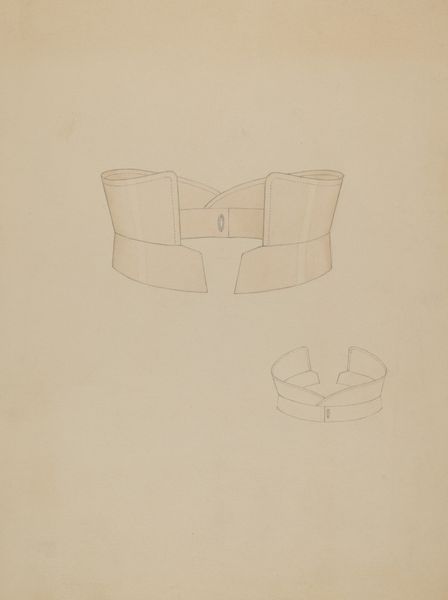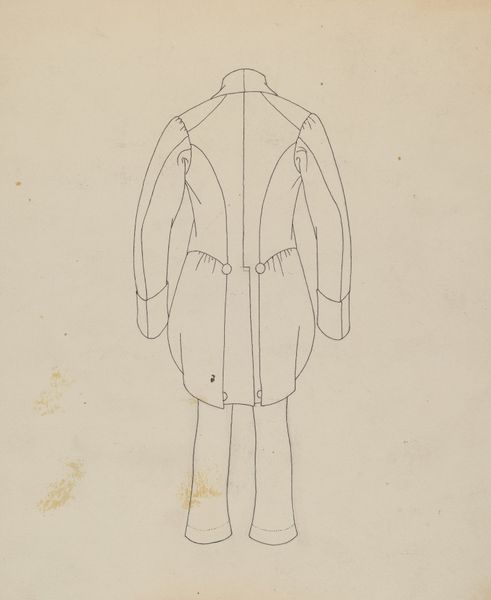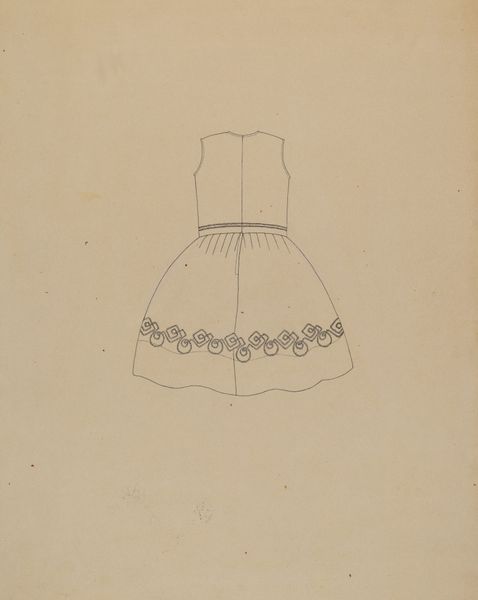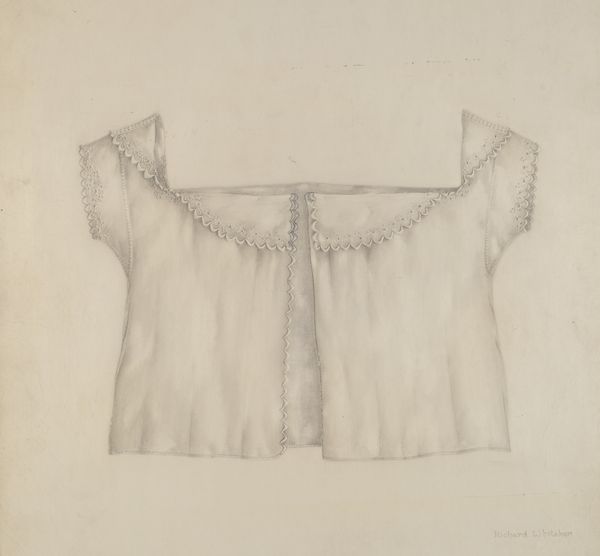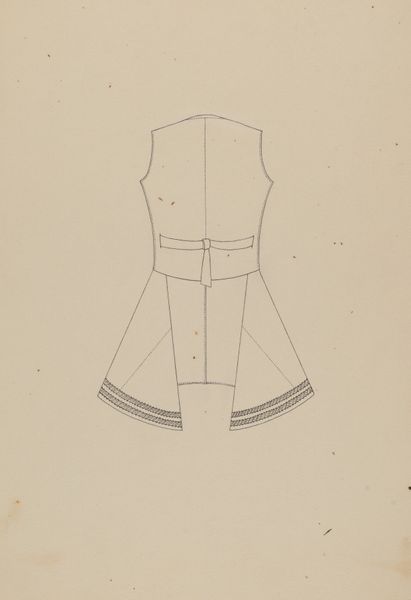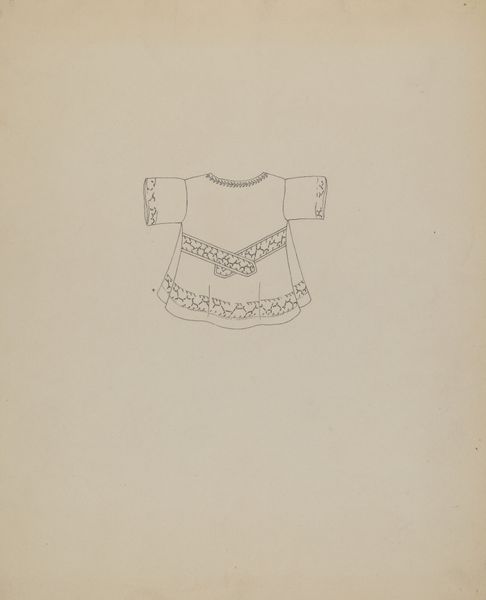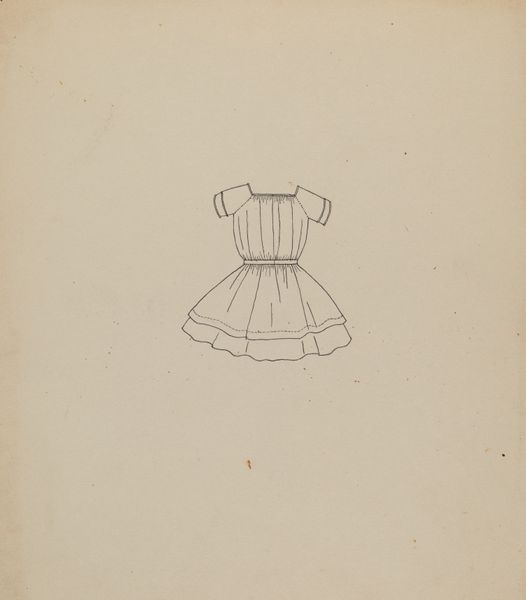
drawing, pencil
#
portrait
#
drawing
#
pencil
Dimensions: overall: 29 x 22.5 cm (11 7/16 x 8 7/8 in.)
Copyright: National Gallery of Art: CC0 1.0
Curator: Let's talk about Louis Maldarelli's "Waistcoat," a pencil drawing created around 1937. Editor: Immediately, I'm struck by the garment's anonymity. There's a detached quality; it's all about line and form. You can almost feel the texture through the marks on the page. Curator: It’s interesting you say anonymity. Maldarelli’s artistic explorations at this time grappled with gender identity and the constraints of dress as it reflected a certain conformity. Consider the absent body, how the drawing speaks to absence, leaving us to project onto this simple form. Editor: Exactly, I agree. The emphasis is on the craftsmanship involved, the almost scientific rendering of the weave. There’s a real concentration on material detail despite its sparse execution. What's truly engaging is to wonder who crafted it, where did the materials originate, what stories do they tell of that specific point in time? Curator: We can understand its value not just through the aesthetic depiction but through an interrogation of clothing production during this era. How it functions as an item within capitalist society, how fashion itself plays into hierarchical class structures. The almost mechanical drawing is then disrupted when we recognize that this waistcoat perhaps never existed beyond the page itself, beyond the theoretical design space. Editor: Which loops back to the initial visual impact—the simplicity emphasizes the artist's attention to the physical act of translating cloth and thread into this meticulous representation. The labor in representing labor—so many conceptual layers for such a simple form. Curator: Indeed, the garment as both subject and object. A reflection, not just of an article of clothing, but a mirror to society itself, and how identities are performed or imposed. Editor: This piece reminds us to consider the artistry inherent not just in the drawing, but in the construction and circulation of the clothes themselves. It transforms a simple utilitarian object into something charged with complex meaning.
Comments
No comments
Be the first to comment and join the conversation on the ultimate creative platform.
